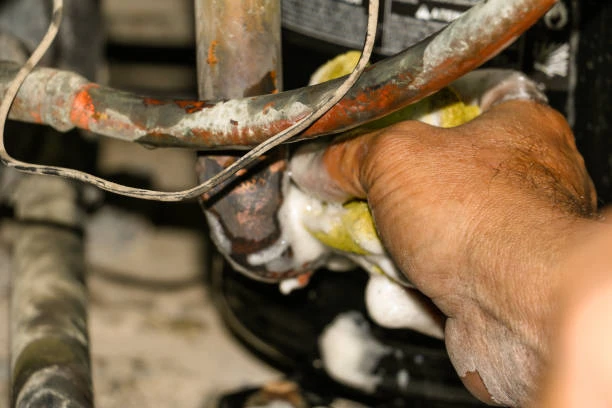The global compressed air pipes and fittings market is witnessing significant growth, currently valued at USD 2.64 billion. This upward trend is driven by increased industrialization, advancements in manufacturing processes, and the rising demand for efficient pneumatic systems. This article will explore the factors contributing to the growth of the compressed air pipes and fittings market, current trends, and future projections.
Understanding Compressed Air Pipes and Fittings
Compressed air pipe and fittings are essential components in pneumatic systems, used to transport compressed air for various applications. These systems are widely utilized in industries such as manufacturing, automotive, food and beverage, and healthcare. The reliability and efficiency of compressed air systems depend heavily on the quality of pipes and fittings.
Key Components of Compressed Air Systems
- Pipes: Compressed air pipes transport air from the compressor to various tools and equipment. They can be made from different materials, including aluminum, steel, and PVC, each offering unique advantages.
- Fittings: Fittings are used to connect different sections of pipes, allowing for flexibility in system design. They come in various shapes and sizes, including elbows, tees, and couplings, enabling users to create complex piping layouts.
- Valves: Valves regulate the flow of compressed air within the system. They play a crucial role in maintaining pressure and controlling the air supply to tools and machinery.
- Filters: Air filters remove contaminants from the compressed air, ensuring the system operates efficiently and extends the lifespan of pneumatic tools.
Factors Driving Growth in the Compressed Air Pipes and Fittings Market
1. Industrialization and Manufacturing Growth
The rapid pace of industrialization, particularly in emerging economies, is significantly driving the demand for compressed air systems. As industries expand, they require reliable compressed air systems for various applications, from powering tools to operating machinery.
2. Increased Automation
The growing trend towards automation in manufacturing processes is another critical factor. Compressed air systems are integral to automated production lines, powering pneumatic tools and machinery. As more companies adopt automation technologies, the demand for compressed air pipes and fittings continues to rise.
3. Energy Efficiency Initiatives
With increasing energy costs and a focus on sustainability, industries are seeking energy-efficient solutions. Designers create compressed air systems to be efficient, and companies can reduce air leaks and energy consumption by investing in high-quality pipes and fittings. This trend is driving the demand for innovative products that enhance system performance.
4. Technological Advancements
Advancements in technology are leading to the development of better materials and designs for compressed air pipe and fittings. For instance, lightweight aluminum pipes and durable PVC options are gaining popularity for their ease of installation and resistance to corrosion. These innovations are appealing to manufacturers looking to improve efficiency and reduce maintenance costs.
5. Growing Demand in Various Sectors
Several sectors, including automotive, food and beverage, and pharmaceuticals, are increasingly relying on compressed air systems. The diverse applications of compressed air—from powering assembly line tools to packaging—are expanding the market’s reach.
Current Trends in the Compressed Air Pipes and Fittings Market
1. Sustainability and Eco-Friendly Solutions
As industries become more environmentally conscious, there is a growing demand for sustainable products. Manufacturers are responding by developing eco-friendly compressed air pipes and fittings that minimize environmental impact.
2. Smart Technology Integration
The integration of smart technologies into compressed air systems is gaining traction. Smart sensors can monitor air pressure and detect leaks, allowing for real-time adjustments and maintenance alerts. This innovation improves system reliability and efficiency.
3. Customization and Modular Designs
Many companies are seeking customized solutions to fit their specific operational needs. Modular designs for compressed air systems allow for flexible configurations, enabling users to expand or modify their systems as needed.
4. Expansion of E-Commerce Platforms
The rise of e-commerce is changing how businesses source compressed air pipe and fittings. Online platforms allow customers to easily compare products and prices, making it more convenient to find suitable solutions for their needs.

Regional Insights
North America
North America is a significant market for compressed air pipes and fittings, driven by the presence of major manufacturing industries. The focus on energy efficiency and automation is propelling demand in this region.
Europe
Stringent regulations regarding energy efficiency and sustainability characterize Europe’s compressed air market. The region’s emphasis on reducing carbon footprints is driving the adoption of advanced compressed air solutions.
Asia-Pacific
The Asia-Pacific region is expected to witness the fastest growth in the coming years. Rapid industrialization, increased manufacturing activities, and rising investments in infrastructure are key factors contributing to this trend.
Future Outlook
The global compressed air pipe and fittings market is projected to continue its growth trajectory, driven by the factors discussed above. As industries evolve and seek more efficient and reliable pneumatic solutions, the demand for high-quality pipes and fittings will remain strong.
Conclusion
The global compressed air pipe and fittings market, valued at USD 2.64 billion, is set to experience significant growth in the coming years. With advancements in technology, increasing industrialization, and a focus on energy efficiency, stakeholders in this market can expect robust opportunities ahead.
Frequently Asked Questions (FAQs)
- What are compressed air pipes and fittings?
Pneumatic systems use compressed air pipes and fittings to transport compressed air and connect different sections of piping. - What industries utilize compressed air systems?
Industries such as manufacturing, automotive, food and beverage, and healthcare commonly use compressed air systems. - How do technological advancements impact the market?
Technological advancements lead to the development of better materials and designs, improving efficiency and reducing maintenance costs for compressed air systems. - What is driving the growth of the compressed air pipes and fittings market?
Key drivers include industrialization, increased automation, energy efficiency initiatives, technological advancements, and growing demand across various sectors. - What are the benefits of using high-quality compressed air fittings?
High-quality fittings reduce air leaks, improve system efficiency, and enhance the overall reliability of compressed air systems.